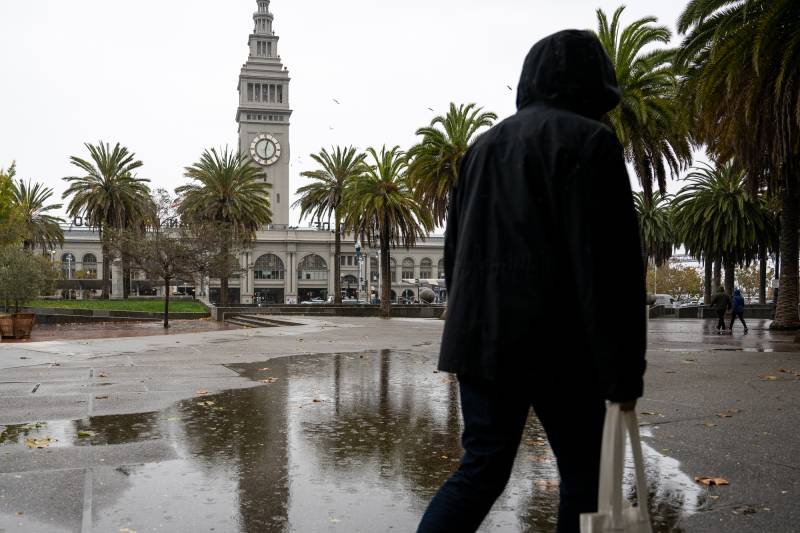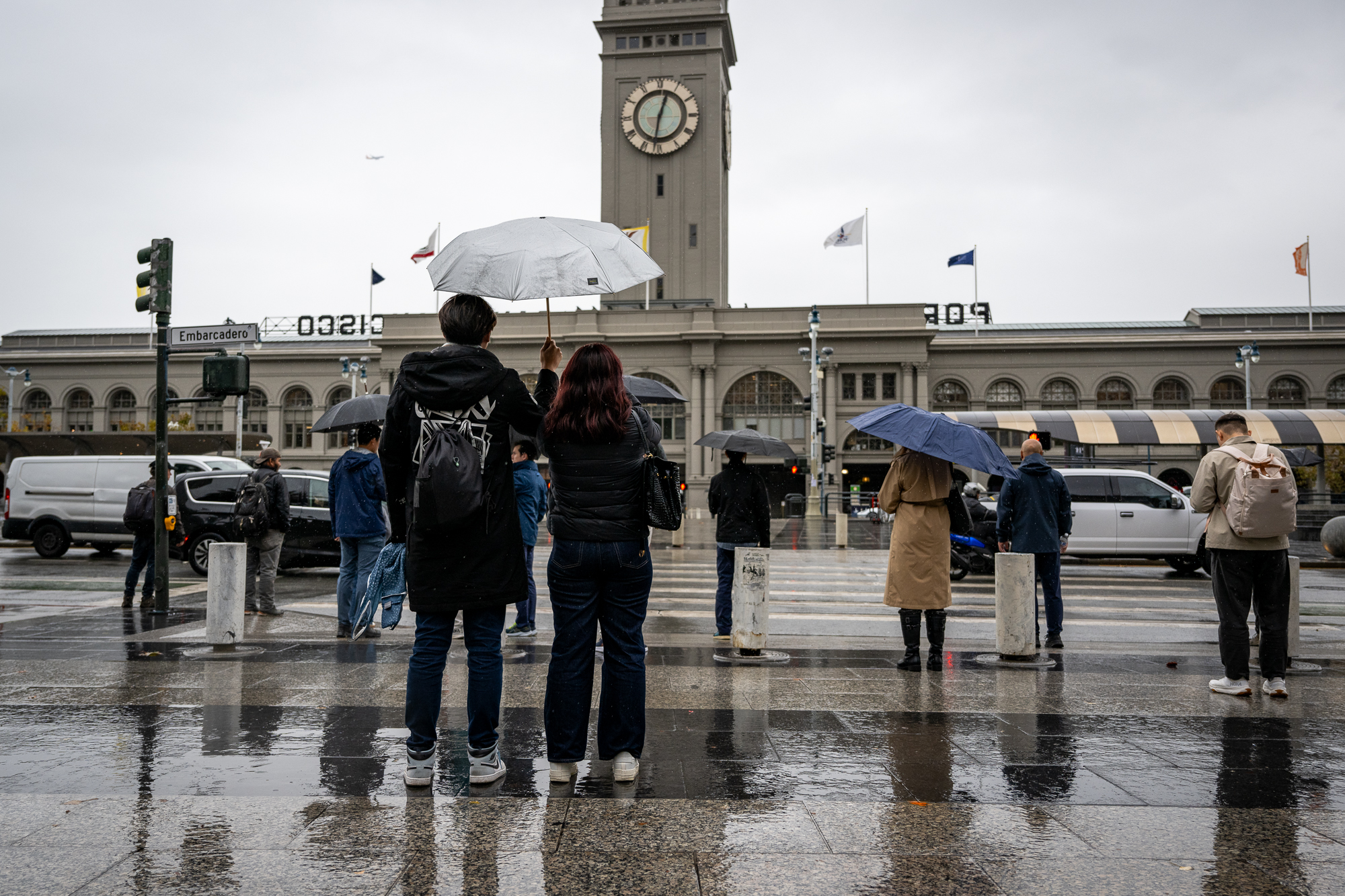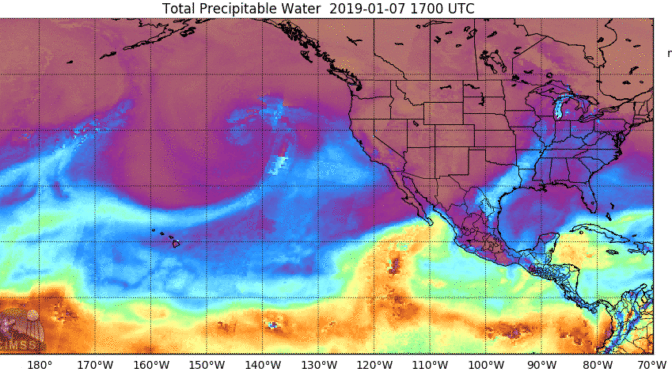The atmospheric river storm trailing the West Coast from the Gulf of Alaska could drop as much as 12 inches of rain in the North Bay and up to 4 inches in San Francisco. Up to 6 inches of rain could fall in the Central Valley, and in the Sierra Nevada, totals could peak at 10 inches.
The atmospheric river is being pumped up by a bomb cyclone, which happens when warm and cold air clash. This drops atmospheric pressure and strengthens a storm, which could mean a ton of rain and wind for the region.
“Today through Friday are going to be the heaviest precip days,” said Sara Purdue, a meteorologist with the weather service’s Sacramento office. “It’s going to be kind of off and on heavy precipitation throughout those few days.”
Atmospheric rivers move an exceptional amount of condensed water vapor over the ocean; when they make landfall, they can cause massive storms that douse a region with a torrent of water like a fire hose. By the end of the century, climate change has the potential to make these deluges up to 37% wetter, according to a June 2022 study by Bay Area climate scientists.
The storm will ramp up over the next two days before intensifying Friday and Saturday. It is already causing issues, including power outages in Northern California, Oregon and Washington, where at least one death has been reported.
Locally, forecasters are “expecting the North Bay to take the brunt of it,” said Gass. “But then, as the front progresses southward Friday and Saturday, we’ll see widespread rainfall across the entire region.”
Gass said the service had issued a flood advisory in the Santa Rosa area through Wednesday afternoon, but as the storm encompasses the region, it could be extended.
“I don’t necessarily think they’ll have to be water rescues, but it’s not out of the question,” he said. “Most of the streams and rivers will be able to handle this capacity of rain. It’s going to be minor flooding in urban areas and small stream flooding.”
But Lowenthal, the Santa Rosa fire marshal, is worried that after the first round of rain Wednesday, soils will be too saturated to handle the heavy rain bands forecasters expect to cascade down on the region Thursday and Friday.
“The soils can only handle so much, and then we start to see runoff versus absorption, and that’s where we start seeing a lot more potential for flooding,” Lowenthal said.



